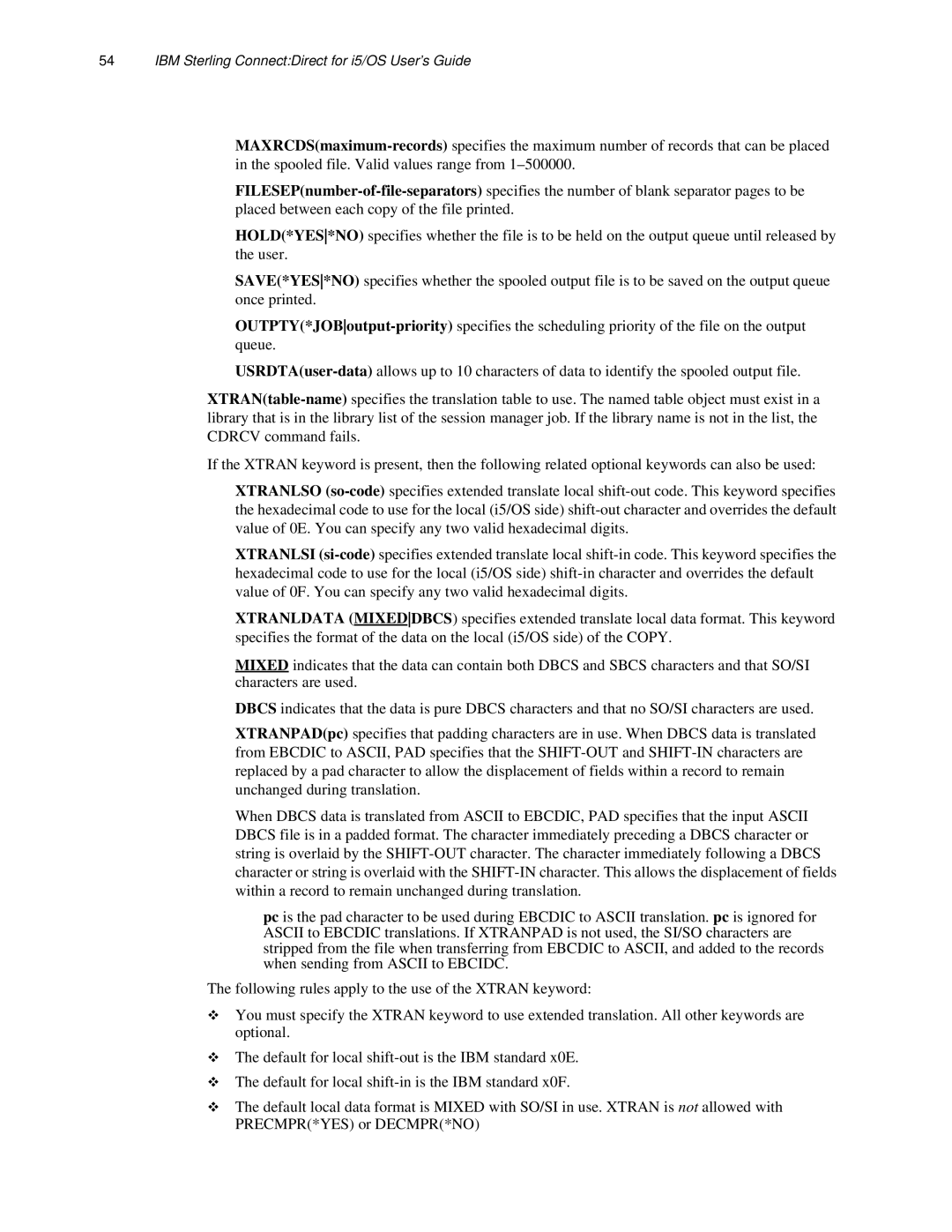54IBM Sterling Connect:Direct for i5/OS User’s Guide
HOLD(*YES*NO) specifies whether the file is to be held on the output queue until released by the user.
SAVE(*YES*NO) specifies whether the spooled output file is to be saved on the output queue once printed.
If the XTRAN keyword is present, then the following related optional keywords can also be used:
XTRANLSO
XTRANLSI
XTRANLDATA (MIXEDDBCS) specifies extended translate local data format. This keyword specifies the format of the data on the local (i5/OS side) of the COPY.
MIXED indicates that the data can contain both DBCS and SBCS characters and that SO/SI characters are used.
DBCS indicates that the data is pure DBCS characters and that no SO/SI characters are used.
XTRANPAD(pc) specifies that padding characters are in use. When DBCS data is translated from EBCDIC to ASCII, PAD specifies that the
When DBCS data is translated from ASCII to EBCDIC, PAD specifies that the input ASCII DBCS file is in a padded format. The character immediately preceding a DBCS character or string is overlaid by the
pc is the pad character to be used during EBCDIC to ASCII translation. pc is ignored for ASCII to EBCDIC translations. If XTRANPAD is not used, the SI/SO characters are stripped from the file when transferring from EBCDIC to ASCII, and added to the records when sending from ASCII to EBCIDC.
The following rules apply to the use of the XTRAN keyword:
You must specify the XTRAN keyword to use extended translation. All other keywords are optional.
The default for local
The default for local
The default local data format is MIXED with SO/SI in use. XTRAN is not allowed with PRECMPR(*YES) or DECMPR(*NO)
